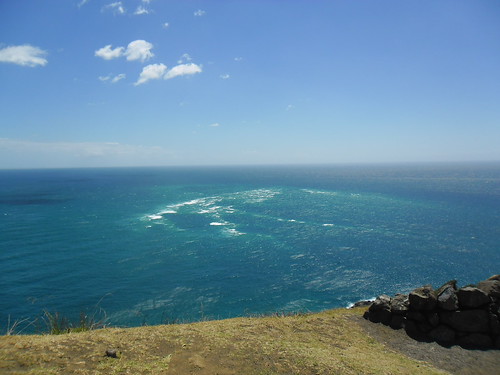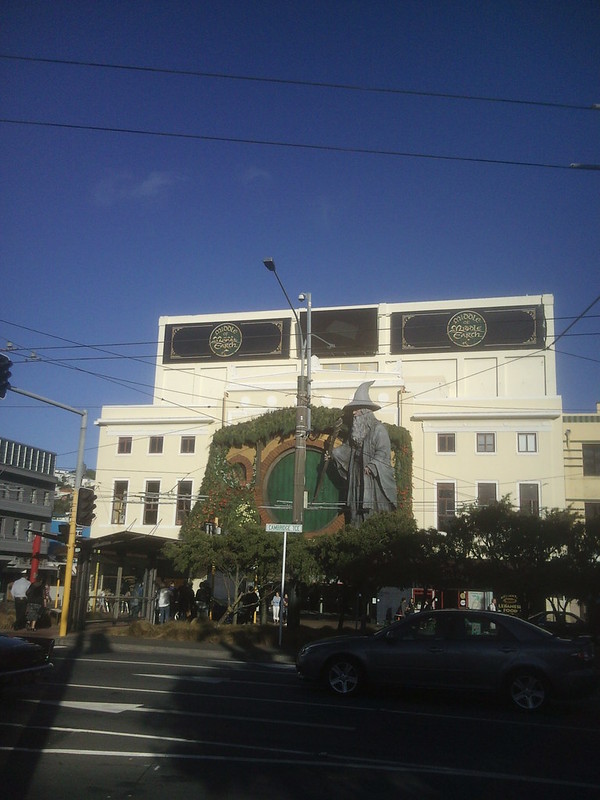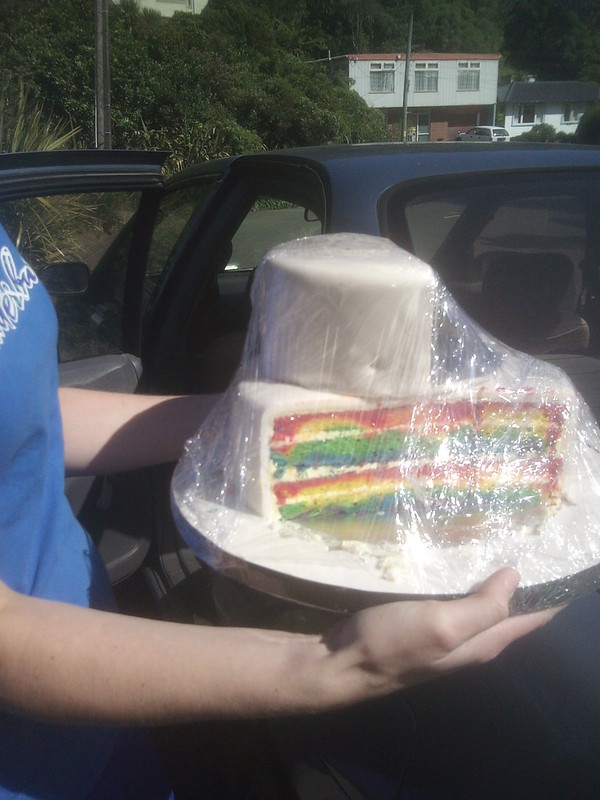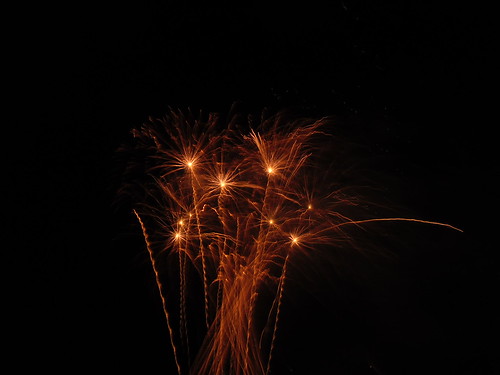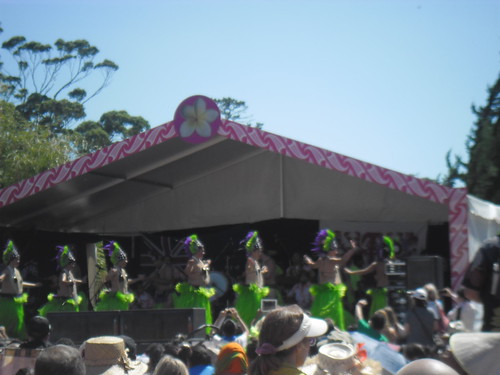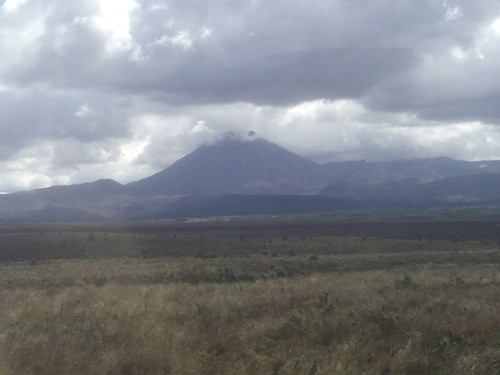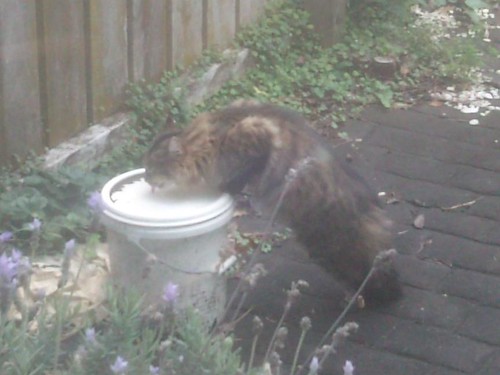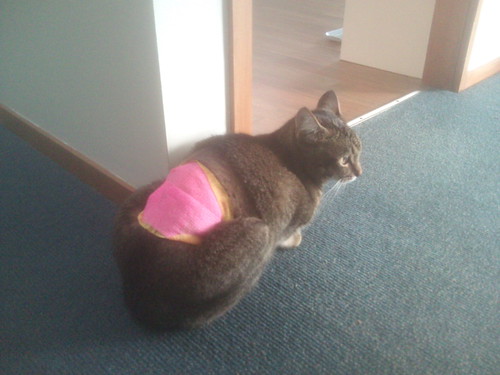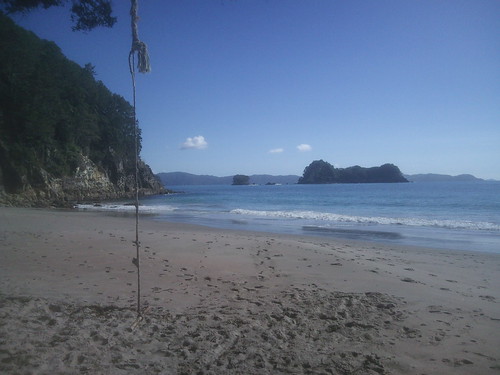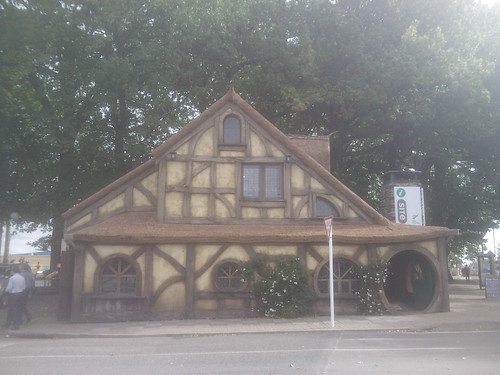
A travelog! and my attempts to find 80 ya books from 80 different countries. (if you have books you know and love from a particular country, add them in the comments:) )
Monday, July 2, 2018
Sweden! Uppsala

Monday, June 25, 2018
Shanghai Museum, Tianzifang, Yuyuan Gardens, French Concession and the Maglev :)
Sydney to Shanghai: the plane, Xintiandi and the Bund
Monday, June 10, 2013
Winter and the Fragrance of Georgie Pie
I've just realised that it is technically winter now. Time to wrap up warm, time to get out my blue coat and gloves and hat, time to-
Hang on, it's not actually that cold.
I thought I'd re-acclimatised to Auckland weather, but I still can't quite believe this is supposed to be winter. Sure, it's still early (and we did have a few cold days last week, and they had SNOW last year), but the sky is blue and I only need two layers. I remember it being faaaar colder in Sydney.
I guess I should go and see some snow at the end of the month.
In other news, the beloved Georgie Pie has returned at last. It was NZ's own fast food restaurant (with BALL PITS, as my bro keeps reminding me) until it was taken over by McDonalds and closed down in the mid-nineties. After a lengthy Bring Back Georgie Pie movement and Facebook group, McDonalds are testing bringing back the pies in selected restaurants, starting with the steak mince and cheese flavour (yes, MEAT pies).
Bro suggested a mission to obtain one of these long-lost pies on the opening day, so we sat in afternoon traffic, found a park and joined the line (which had been much longer when they first opened that morning, apparently). As soon as I smelled that special pie smell, I was taken back to eight years old, giving my order for a small mince pie and a latticed apple and blackberry.
It's funny how easily smells can trigger memories and the feel of a place or time. What if you could capture those scents in bottles and have a library of them, labelled according to time and date, and you could transport yourself back just by smelling one? Transport metaphorically, of course, within memories.
Hmm. Or literally. I can see that turning into a very strange story.
The pie was good, in any case.
Friday, May 10, 2013
EnZed
Hello everybody! I thought it was probably time to de-hiatus this blog, and update it with all the things I happen to have done in the last few months. Well, not all the things. That might get a bit tedious.
It's funny how being in a place other than 'Home' can change your view of things. So much is new, so much is different, and interesting things pop up every day. The Underground! Coats! Squirrels! When really, if you cast the same gaze over Home, you can come up with just as many interesting things.
Notable things I have done in the past few months:
Swum in one of the northern-most beaches of New Zealand, and walked to see the Pacific Ocean and Tasman Sea meeting and churning at Cape Reinga.
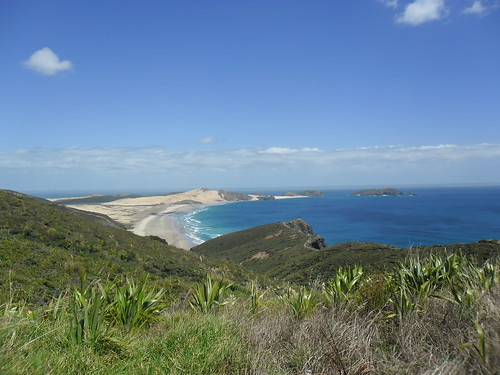 |
| Well, this isn't the Actual beach. We swum at one a few bays over. |
Seen a penguin in the Wellington lagoon. No pic unfortunately, but I did see one!
Walked past Peter Jackson's Embassy Theatre.
Eaten an amazing rainbow wedding cake.
Ridden in a limo.
Attempted Gangnam Style in heels. No, there are no photos.
(Okay, I was a bridesmaid too. Congratulations to the New-Minted Travelicious Lady and the Boy with the Lotus!)
Watched an incredible hour-long fireworks show, with rainbow fireworks and people on fire and light shows against the side of the museum and wire work.
Been to the Pasifika festival, where I watched dance performances and ate icecream in half a melon.
Driven an automatic car for the Very First Time.
Driven very slowly into a wheelie bin (unrelated to the previous item).
Tried to watch Indiana Jones at an outdoor theatre, but ended up cowering under ineffective blankets and running to the car in pouring rain.
Tried my hand at glass blowing.
Bussed past Mt Doom aka Mt Ngauruhoe.
Survived one of the longest warm, dry spells New Zealand has known while it snowed in London (what a hardship).
Gained the trust of two new cats: skittish Prtska (the name is entirely my fault ha) and ninja Poppy, who we're pretty sure has ADHD and has had some vet visits recently from fighting.
Swung on a proper beach rope swing.
Been to Matamata aka Hobbiton (though not the actual set, this time round. This is just the town information centre).
Now the cold is coming in at last, and the washed-out days where the sun spends its time failing to push through the clouds. Good time for catching up on my reading.
Wednesday, February 6, 2013
Lincoln and Burns Night
Today I am off to Lincoln. I've only got a few more weeks in the UK (I will return in September, if all goes well) and I've been squeezing as much as I can into them. This morning I was trying to make my room presentable for potential new flatmates, but I still left in good-ish time.
If only the bus had come when it said it was going to, not ten minutes later (they're supposed to come every five to eight minutes). If only I hadn't just missed the Jubilee train and had to wait four minutes for the next one (I've got used to tube trains every 1-2 minutes). If only the train hadn't been held at Canary Wharf to 'regulate the service'. If only I hadn't chosen the wrong door, adding precious seconds to my change at London Bridge. If only I hadn't missed the Northern Line train by five seconds, and had to wait five minutes for the next one. If only the driver of the Northern Line train hadn't decided to wait stupidly long at every station. By the time I got to Angel, I was convinced I was going to miss the train, so much so that I was a bit relieved I wouldn't have to run through the warren of King's Cross at high speed in my coat and backpack. There were four minutes until the train left, and I still had Euston to go before we got to King's Cross.
Or... not.
I'd mixed up King's Cross and Euston. King's Cross comes first. I sprinted off the train, trying not to collide with too many people, up the escalators, and the next escalators, and the next escalators. As I was reaching the top, the lady on the loudspeaker said that the next train to leave from platform 3 would be the 10.08 East Coast Service to Newark North Gate. My train! At least now I knew which platform, which is one of the things that takes up time to figure out.
I still only had about a minute left, and hadn't collected my tickets. I ran for a ticket machine, stabbed in my code and almost ran off with half my tickets before I remembered there were more to come. I followed the signs to platform 3, ran through the barriers (they were open, no need to figure out which ticket I had to stick in them! Hallelujah!) and skidded down the platform to the first open door (first class). I was on the train!
I was only 30s late, but the train was later. If it had been on time, I wouldn't have been able to catch it. Now we're speeding through snowy countryside with fields blanketed in white. In central London the snow has disappeared, but out here it's still a way from melting. Very pretty. And there are bunnies in the snowy white fields!
I stayed with my lovely hosts in a village a little outside Lincoln, beside a Roman archaeological dig. The smaller roads were very icy and we slid a bit at one point. Someone had tried to build an igloo using an umbrella as scaffolding, though it was only half-done.
Friday was Burns Night, when much of Scotland celebrates the life of Rabbie Burns and eats haggis. Though Lincoln is in England, my hosts have Scottish connections and were celebrating too. I had a great night, with Scottish smoked salmon, proper sheep's stomach haggis, neeps and tatties (turnips and potatoes). Though we didn't have a bagpiper, we had an iPod to pipe the haggis in, and the Ode to a Haggis (great chieftan o' the Puddin-race). To finish, there was cranachan and clootie pudding, and whisky, of course.
On Saturday we went for a turn around Lincoln. Lincoln Cathedral is one of the largest (if not the largest?) Norman cathedrals, and is set high on a hill looking over everything. It's fantastic coming across the low hills towards it in a car, and it must have been incredible to be a pilgrim in the medieval times, approaching this colossal building on foot. The inside of the cathedral has beautiful vaulted ceilings and high windows. Footsteps echo and you can hear the stillness.
Right outside the cathedral is the castle, which was once used as a prison, and is in fact where the court house still is. It's having renovations at the moment, but when it's not you can walk all the way around the tops of the walls. Instead we walked some of the way down Steep Hill, an old medieval street with original buildings stepping down the hill. The shops along here are wonderful little boutiquey things with crafty jewellery and clothes and knickknacks that you could spend hours and hours in. We peered in a few, then went down into the main town for coffee in a half-timbered café on a bridge that has been open for business for about five hundred years. The beamed ceilings were low, the casement windows glinting in the light, and if you squinted a bit and imagined folk in doublets and hose you could almost believe you were in the sixteenth century.
There was a lovely winter barbeque for dinner, and soon it was time to get the train back to London. The rain had come in the night, and the fields were a patchwork of greens and browns, very different from the white landscape of Friday.
Tuesday, January 1, 2013
Amsterdam Day 3: Anne Frank Huis
The wait was worth it, though. We thought they were only letting in groups of twenty or so at a time (hence the long line) but really the line moved slowly because the house was absolutely full of people. Despite this, the atmosphere of the place was amazing - very quiet, with everyone looking at the stories and relics of the secret annexe's inhabitants and being respectful.
The house was Anne's father's office and warehouse, and Anne and seven other people shared a few rooms at the back of the building for two years until they were betrayed by an anonymous tip and sent to concentration camps. Of the eight, only Anne's father survived the war, and went on to publish Anne's diary.
You start out in the front rooms, where the warehouse and offices were in Anne's time. Only the office workers knew about the annexe's inhabitants, and Anne, her family and the others had to be careful the warehouse workers didn't hear them. There are photos of the office staff and Anne standing in these same rooms, and it's surreal to think of them there. You climb some very steep stairs and after a few more rooms, you climb behind the bookcase and enter the annexe.
First is the room in which Anne's parents and sister slept, with curtains shut and light dim. The rooms are actually larger than what I'd thought, but if you consider eight people living here for two years in very little light without going out, and without being able to make noise for fear of discovery, it was probably incredibly claustrophobic. Next is Anne's narrow room that she shared with one of the other inhabitants, still with her pictures of film stars and art pasted on the walls, and then the washroom with its basin and not much else. The stairs to the upper floor are even steeper - they take about as much floor space across their rise as they do across their width - but above is the main living room where two more people slept at night, and then Peter's small room with its ladder up to the attic and the window where Anne and Peter used to look out at the world.
It's so strange to think of everything that went on in these rooms, both the day-to-day living and the final day when the people were taken away. The rest of the museum shows pictures of Anne at all ages until 13, when the last photograph of her was taken. It seems incredibly sad that we can read her words but not know what she looked like in those last years, and that there is a 'last photo' of her that shows her at such a young age. Another section talks about discrimination, and trying to figure out the right thing in a world that has so many different ways to define 'right' and 'wrong'. The Nazis thought what they were doing was right. Many people today who do terrible things think the same.
By the time we left the museum it was 3.30 and we needed food. TOWSR wanted more chips (a dependable gluten-free lunch) so we went to Febo and I tried out the hamburger vending machines. The burger was actually pretty good - I guess they replace them lots and they spend less time in there than they might do in McDonalds warmers. Next we tried to find chocolate, and despaired of ever finding a proper supermarket (where do Amsterdammers buy their food from? Do they eat out every night? We are unsure). And lastly, back to the hostel to warm up...
Amsterdam Day 2: Library, Begijnhof, Schuttersgalerij and 2013
The hostel has a cat, and I think it likes me. It was asleep outside our room when I left for breakfast this morning, and it only bit me once when I tried to pat it. And then it followed me down to breakfast!
We tried for the Anne Frank Huis this morning, but the line looked about an hour and a half long so we went to our next stop: Amsterdam public library.
This is an awesome building, seven floors worth with beautiful views out over the city and cool bookcases. The children's section has lots of curving circular bookcases, one that has a second level that you can climb up to via a spiral staircase, and a giant polar bear. All libraries should be like this. We had some frites for lunch, and then wandered through the city and looked at the shops and the tulip stalls and found a post office. There's an amazing bookshop called the American bookshop that winds up for three floors, and just behind it is the Begijnhof, a courtyard surrounded by pretty buildings that was once a home for Beguin nuns, who wanted to live a nun's life without taking the vows.
The Amsterdam museum is right next door, and has a free gallery with huge paintings and photographs and an amazing carpet along the floor representing all the different nationalities that live in Amsterdam. I found the New Zealand square and enjoyed the paintings of guardsmen and orphanage women, and the gigantic 17th century wooden statue of Goliath.
After that it was back to the hostel for dinner, and to wait for the New Year celebrations to start. We'd been hearing explosions all day, and it turned out that these were small sort-of-hand-held fireworks that people kept letting off in the street. Lots of car alarms accompany the bangs and crackles.
It began to rain about nine o'clock, and we weren't sure if the promised street parties were going to happen. We stayed in the hostel's bar until about 11.15, then wrapped up and umbrelled up and forced ourselves out into the windy wet street (have I mentioned Amsterdam is very windy? It's like being back in Wellington). We'd ended up in a group of New Zealanders and one Nederlander (who had party horns, which were really useful) and found a spot beside the fairy-light bedecked outdoor ice rink under some trees. Fireworks were going off everywhere, including in the road in front of us, and the path to our destination Liedseplein turned out to be much like an obstacle course, dodging people, fireworks, broken glass, bikes and large puddles as well as struggling to keep the umbrella up and away from people's eyes.
By midnight we were soaked and freezing, but everyone was jumping around and whooping and wishing Happy New Year and throwing still more fireworks around. With the number of bangs and the strength of them (as well as the sirens from ambulances and police) we might have been in a war zone. We wandered around for a while enjoying the festivities, then went back to our hostel for warmth and music and dancing.
Happy New Year to everyone! Hope it brings excellent things :)
Saturday, December 29, 2012
La Tour Eiffel à Nôtre Dame et deloins, avec Haiku
It was about this time last year that I presented you with Haiku of the French Riviera, and this post will be the sequel: Haiku of Paris. I'll start with one about the roads:
Cobblestones, Smart Cars,
No road markings to speak of.
Perpetual gridlock.
It's not actually as bad as that in most places, but it's true they have no lane markings. There are giant roundabouts where the road is wide enough for four, maybe five cars, and it's a free-for-all get-a-space-where-you-can. I'm glad I'm not driving in Paris.
I left at 9.40 this morning for le Mètro, ten minutes after I was planning to be at the Eiffel Tower. My late start was partly due to realising that I'd locked up my valuables with a non-refundable 2€ coin and forgotten to take out my umbrella or camera. These are important on a rainy day in Paris, and I had to sacrifice another 2€ to get them out and lock the remaining valuables up again. It didn't actually rain, but it would have done if I hadn't had an umbrella.
I got off le Mètro at École Militaire, which is very close to the Champs de Mars and gives you a good view of the Tower as you walk the length of the park. I began to take photos of the Eiffel Tower. This would become a habit throughout the day - me with the Eiffel Tower whenever it was visible.
Coming from the Champs de Mars is actually a good way to get to the Tower, because the queue on that side of the tower is shorter (at least when I was there). There are two types of queue: those that want to take the lift up, and those who want to walk and get a cheaper ticket (3€50 vs. 8€). I joined the walking queue and we shuffled slowly but surely towards the ticket office. I'm glad I got there earlyish, because the queues only grew while I was up in the tower, and had to have been at least an hour long by lunch time.
You can get to the first and second levels by stairs, but you have to pay extra for a lift to the very top, and the top was obscured by cloud today anyway. The second level is about 130m up, and I went as far as you could go. The views are amazing - much of Paris looks white from a distance, with splashes of gold here and there and the river winding through.
I'm quite glad I walked, because I got to see a lot more of the tower and savour the views on the way. You go up inside one of the legs/pylons, curling ever closer to the middle until you hit the first level. Here you get to see a piece of the original spiral stair linking levels one and two, which looks extremely scary and was too steep for public use. They're doing construction on this level, so some of it wasn't open, but I went around as far as you could and stared in the four directions over Paris. The second level has shops and a restaurant in the middle, and the lifts to the very top, and is probably where some people start to get vertigo. I admit I made sure my hands were completely free coming down from there - no camera - and tried not to look down too much.
Temporary tour.
Ha! One hundred and twenty-
Three years and counting.
See how I changed languages to get the syllables to fit? That's skill, that is.
I walked along the Seine, through a Christmas market and across the bridge to la Place de Concorde with its Egyptian obelisk and ferris wheel, then through the Tuileries gardens while eating a chocolate and banana crêpe. There are lots of statues in the gardens, and grass that you're not allowed to sit on, and at the end of the Tuileries is the Louvre, which I hadn't realised. I'd decided not to go the the Louvre or any museums this time around, because I would have been running at full speed round its eight miles of galleries, trying to get everything in before I had to move on to the next spot on my itinerary: the Shakespeare bookshop.
This is a little English language bookshop near Nôtre Dame that is as bookshops should be: books crammed right up to the ceiling, with nooks and crannies everywhere and barely enough space to pass people. I crossed the Seine by the Ponts des Arts, which is completely covered in padlocks signifying love: the idea is you write your names on it and throw the key into the river to show that your love will never be broken. There are quite a few combination locks on there too - I wonder if that still signifies the same thing? Because as long as you remember the code, you can go and unlock it any time you want.
After the bookshop I joined the snaking queue for Nôtre Dame. The cathedral will be 850 years old next year, and the statues and carvings and windows are incredible. The colours of the stained glass are beautifully vivid and the ceiling soars high above. I spent a while staring up and realised that the arches in the nave are not quite at right angles to the walls, and then wondered if this was on purpose or not. It seems incredible that they could build something like this so long ago.
Last on my itinerary was Montmartre. I got le Mètro there and climbed the hill to see the Sacré Cœur Cathedral and the panorama of Paris. There were a lot of people up here, and a Christmas market where I got some kind of chocolate covered marshmallow thing and took pictures. You weren't allowed to take pictures in the Sacré Cœur, but it's beautiful inside, with round arches and lots of mosaics.
I got back to the hostel just as it was getting dark, and decided to treat myself to dinner in a bar-brasserie on a cobblestoned corner that reminded me of a movie. I had filet mignon (pork, I think. I was expecting beef) with lovely sautéed potatoes and salad, and a red wine, this being Paris where wine is cheaper than soft drink, and sat in a wicker chair by the window watching people go by. There were two fluffy dogs in a car outside that were keeping close watch on the street and kept staring challengingly at me, which was extremely cute.
Now I'm looking forward to sleep... Time for one last haiku.
Wide white boulevards
Every building stately, calm.
The river flows through.
Friday, December 14, 2012
Austria Take Two: Salzburg
This is an impressive journey, and worth doing by train I think. The road weaves back and forth and goes through tunnels, but the train spends most of the time right by the river with mountains towering on both sides, white peaks with slashes of black cliff face and dark snow-dusted forests hugging the slopes. We went past a castle on an outcropping of rock, and lots of little villages with colourful wooden houses covered in snow. Everything looks so clean and bright and untouched, with white expanses that I guess are fields in summer.
Salzburg itself is still pretty much surrounded by mountains, though there's more valley space. We took a tour of the old town with a nice guide who showed us the squares and the statues and took us inside the Dom cathedral, through a graveyard with beautiful wrought iron grave markers and past a very old bakery that is still baking bread.
He explained that one side of town is known as the Old Town, and the other the New Town because it was only settled in 15 AD. That's not a typo. The Dom has five organs (Salzburg has a proud history of music, of course), but before there were organs, singers and instrumentalists performed from balconies near the ceiling. The sound would have floated down from above and all around, which would have been an amazing experience.
The buildings are tall and close together, because there isn't much room to build, the streets narrow, and wherever you are in the city you can look up to the castle on the rock with the town surrounding it. We ended at Mozart's birthplace, then decided it was time for lunch and made for NordSee, which you see everywhere in Austria and apparently Germany. I had a very nice meal of fish, potatoes and buttered vegetables and, suitably warmed, we ventured back out to inspect the chocolate shops and the Christmas market.
 |
| Mozart ducks. Obviously. |
Many of the buildings are inspired by Italian architecture, because Salzburg was a main trading point for people from Italy and Germany, especially when the salt mine was still open (Salzburg = Salt Mountain).
By four o'clock we were getting tired and cold, so we caught a train back to St Johann im Pongau and curled up with our books.
St Johann im Pongau: Days 3 and 4
IT IS COLD?
It's not a wet cold like you get in London. This is a crisp cold, hovering around minus ten Celsius and diving to minus eighteen at dawn, before the sun has had a chance to warm everything up again. On Tuesday we went out to find the McDonalds (wifi), and had a bit of an adventure trying to find a way across town and the river that was open to pedestrians. They only clear some of the footpaths of snow, and I'm sure in some places the roads are supposed to be higher speed so don't actually have footpaths, but eventually we saw the sign and slogged towards it through pristine white snow or grey mush, depending on whether we were following an actual path or not. The snow in some places is as deep as my knee.
Our internet at the hotel came with a five hour limit on it, so it was nice to be able to sit and check emails and things without worrying about the time. As we were walking back up the hill, a little old lady called us back and insisted on giving us lollies, which was very nice of her. When we got back to the hotel we sat in the spa for a while, and then retreated to our room for dinner.
Our little bar fridge doesn't have quite enough room for my sparkly red bowl of salad, but I've found a better solution: leave it just outside the sliding door in the day time, and it's perfectly crisp in the evening - not actually frozen. So I've been calling the balcony the fridge.
On Wednesday I spent most of the day determined to finish a book, and went out to see the local church just after the sun had dropped behind the mountains. The slopes were luminous, and the Christmas lights strung all around town were sparkling in the dusk. I didn't actually get in to see the church, but I had a nice walk anyway, taking pictures and watching the chairlift take people up the mountain. TOWSR and I had considered skiing, but neither of us has had much practice, and thought the expense and likelihood of broken bones probably wasn't worth it. Especially as my foot has only just healed. I'm keen to try skating on Friday, though, if the rink is open...
Monday, December 10, 2012
Austria Take 2 - Days 2 & 3: St Johann im Pongau
There was a bit of excitement when we realised we couldn't find the room key or my hat and gloves, but eventually they reappeared and we stopped with the conspiracy theories about people breaking into our room while we were sleeping. We weren't exactly sure how cold it was, but we ventured out into the crisp air with lots of layers and scarves and had a wander around the deserted town. It was Sunday, and nothing is open on Sunday, so we hardly met anyone on our exploration of the Hauptstrasse (High Street), a little snowy garden over a cliff edge, the bottom of the chair lift and around the Dom church.
When we got too cold we went back to the hotel and noticed the weather for the day had a temperature of -10. Which we'd just been walking around in.
A soak in the hot tub warmed us up, and then we went for dinner at one of the hotel restaurants where TOWSR got a special gluten free pizza and I got one with spinach, bacon and ewe's cheese (big enough for breakfast and lunch the next day). With sorbet, icecream and fruit with chocolate sauce to follow, we thought overall it was a pretty good dinner.
Monday morning we woke up to snow that TOWSR called semi-blizzard snow. We could not see the mountains. We could not see the buildings across the road. We could almost see the edge of our deck. So we spent the morning with books, and ventured out into the knee-deep snow around lunchtime to see how far we could get.
The snow ploughs had been around clearing the roads and footpaths, and we went down into the valley to see all the buildings with their blankets of snow, wandered around and retreated to the bookstore and supermarket. There really were a lot more people around than on Sunday, and it didn't feel so much like we were two of the last vestiges of humanity clinging to life in a dead world. The snow had stopped falling, and when we got back to our room I began to make a snowman on our deck, but stopped when I couldn't feel my hands anymore. A few hours later the snow began again, and we huddled happily inside as it rose higher and higher and covered up the sad beginnings of my snowman.
Saturday, November 17, 2012
Vienna Day 2: Naschtmarket, die lichter und das Cafe Central
It turned out to be a beautiful classical/Art Nouveau building with a lacy, leafy metal dome, and then that led us on to the Naschtmarkt. This is a long market bounded by two main streets that goes on and on, with fruit and vegetables and spices and meat and knickknacks and antiques and scarves and chocolate shops. We got chili hot chocolates and wandered, marvelling at the range of everything (there were fruits I'd never seen before, as well as durian/jackfruit wrapped in plastic so it didn't stink up the market). I got an entire kebab for three euros, which I thought was incredibly cheap, but by this time we'd done quite a bit of walking and my lower limbs were complaining.
We retreated to the hostel for a nap and a nanowrimo session, and I played with the lockers in our room and giggled (these lockers are amazing. They have inch-depth buttons that poke out, and if you push them in they just come out again and the locker doesn't lock. If you push the button with your key card between the button and your thumb, however, the RFID chip inside the key card does something and THE LOCKER LOCKS. These lockers have been sent back from THE FUTURE).
When it got dark we ventured out again, and saw a vintage tram trundling along that needed a picture taken of it. It looked like it belonged in a museum, but it was happily carrying people and advertisements on the main line alongside the modern ones. We took the U-Bahn Underground train to the centre of the Ringstrasse to meet The One Who Speaks Russian's friend, and walked past amazing buildings and fairy lights and three sets of horses and buggies, complete with old-fashioned lamps in the carriages and drivers with top hats. We then scrutinized the coffee houses and decided on one which was once frequented by Lenin, Trotsky and Freud - the Cafe Central.
It was an absolutely beautiful place to have coffee, with marble pillars curving up to meet each other at the ceiling, incredible cakes and a grand piano. i got a black coffee which was very smooth and not at all bitter, and some sort of hazelnut cream slice with a reproduction of Klimt's The Kiss on top of it. The One Who Speaks Russian was very impressed with her chocolate creme brulee torte thing, and we had a nice few hours sitting in this beautiful cafe, listening to the pianist (who played a song the Hopeful Gardener enjoys playing, and made me a bit homesick) and pretending to be sophisticated Viennese.
Back at the hostel, we listened to the live band in the hostel's bar and planned our day tomorrow. I should probably get some sleep so that I can make the most of it...
Thursday, September 13, 2012
All hail the Paralympics! And Wicked!
Rundown of the post: Paralympic Opening Ceremony, Paralympic Swimming, Wickedness, Paralympic Athletics.
There looks to be a theme going on here.
The Paralympics opened on a clear Wednesday night in London, under a buttery gibbous moon. I hadn't realised that it clashed with my writing meeting on Wednesdays, but that only meant I was still in town at 8.30 for the start of the ceremony. I went down to Trafalgar Square with another writer, to sit in the crowd and watch the big screens. The square was filled with people sitting on the concrete, on the steps, and standing to the sides (you got shouted at if you stood in the middle and blocked the view from the stairs).
They started the count-down. Everyone yelled and cheered along with the screen. And then the Paralympics had officially started!
There was Ian McKellen reading from The Tempest, and many people, abled and disabled, who descended from the sky on wires and flew around the stadium. There were eyelash things that were like bendy poles with people tied on top and bouncing around, and dancing with umbrellas, and drums. Lots and lots of drums.
After the first part of the show, the athletes began to come out. I wished for the second time that New Zealand had officially changed its name to Aotearoa. It was getting late. I decided to stay until New Zealand appeared and then go and watch the rest at home, much closer to bed than Trafalgar Square and much warmer too.
I joined the Kiwi cheering, then ran for the Trafalgar Square Underground entrance (it was open! This is the first time I have seen it open! It's always been under refurbishment). I got home just as the speeches were finishing, and was able to watch the rest on the sofa with a blanket with my flatmates. Good thing, too, because it didn't finished until half past midnight.
I had tickets on Sunday night to the swimming finals, right in the Olympic Park. This was the first time I'd been to the Park, and I coasted along with the crowd from the tube station, past the giant mall and around to one of the main entrances. One of the games-makers was sitting on a high chair with a megaphone at the corner of the roadway, and made the observation that, if it were dark, it would be like the zombie apocalypse, with so many people shuffling towards him. Through the security (I forgot about that, and had worn lots of jewellery I had to take off) and into the Park.
I'd planned to do a quick walk around before my session, but a look at the signs told me that wasn't going to be possible. It was half an hour's walk to the other end of the park. That's how big it is. Instead I did a quick running-tour of the area between the stadium and the aquatic centre and joined the queue to get in.
My seat was up in one of the wings of the pool, so that I couldn't actually see the seats on the other side because the roof of the pool was in the way. It's a pretty good design, really - the two wings are temporary and will come down when there isn't a demand for a swimming pool with thousands upon thousands of spectator seats. I had a good view of the pool and the entrance for the athletes, though, which was great. It's very strange to see something so many times on a television screen and then to actually be there in person.
The evening was entirely finals, which was very exciting. The first four races all broke world records. I think the total for the night was eight world records and ten Paralympic records. The crowd was amazing, cheering and cheering and going crazy whenever a GB athlete appeared. For future reference, I think the best crowds are to be found in events with a finish line, because you can see in real time exactly what's happening. By the end of the night I was hoarse, but had seen a gold medal from Cameron Leslie and a silver from Mary Fisher. Awesome.
On Monday the One Who Speaks Russian arrived, tired but cheerful after a forty hour journey from New Zealand. I stocked her with supplies of chips and we started the two hour journey across London to my house (London is big).
On Tuesday we went to Wicked, which was absolutely incredible. It is a thought-provoking musical, with themes of prejudice and preconceptions and talking animals. I love the way it interweaves the story of The Wizard of Oz, so that you make connections every so often about characters' fates. The sets included giant cogged screens and a huge time dragon looming over the stage, the costumes reminded us of The Hunger Games (though of course Wicked came first) and the music and lyrics were great - especially the song entitled ’Loathing, Unadulterated Loathing'. I liked the ending too, more than I had in the book.
Thursday was our Paralympics day. We took supplies of chocolate cake, raspberries, popcorn and dinosaur jellies and sat in the stadium, another case of I-am-sitting-in-the-television-ness. The sun was blazing hot (The One Who Speaks Russian got amazing weather while she was here) and the crowds were huge. The most impressive event of the day was the T11 triple jump final for blind athletes. Imagine running at full tilt, then hop-skip-jumping as far as you can without being able to see. The crowd of eighty thousand had to be silent while the athletes completed their jumps, because they ran towards the sound of their coach clapping at the jumping line or the sandpit. The eventual silver-medallist had a show with velcro track pants, whipping them away like a matador as the crowd shouted OLĖ!
A few jumps went awry (an official by the track had to topple backwards twice to get out of the way) but mostly they were pretty spot on. There was also wheelchair racing, restricted sight racing, discus and shotput finals, and general running races. It was a great morning.
Sunday, June 17, 2012
Turkey Day 6: Ephesus, Selçuk and a Turkish Bath
We got into Selçuk around noon and had lunch on the terrace roof of our hotel, looking out over the town and up to the medieval castle on a hill in the middle of the city. Again, lots of beautiful mezze and then a choice of fish, beef or chicken. The beef came on kebabs stuck artistically into half a tomato. We spent the afternoon wandering around Selçuk looking at the Basilica of St John, taking pictures of the one remaining column of the Temple of Artemis and visiting the museum, which has artefacts from Ephesus including lots of statues of Eros, most of which I found very creepy (little wise winged baby staring at you? Creepy). I especially found a gigantic emperor's head creepy, because it was carved to look like a baby's face. Lots of beautiful ancient jewellery and glass bottles and weapons, as well as marble upon marble upon marble.
At four o'clock it was cool enough to go to the ancient city of Ephesus, it being only about 32 degrees Celsius. We entered from the top and wound down through the valley, passing fields of columns and huge stones laid out for cataloguing as well as the smaller amphitheatre built into the hill. When you stand in the centre of the amphitheatre you hear your voice echo around.
We walked along ancient marble-paved streets, saw a bath house and a public toilet and lots and lots of cats who were very happy to pose for us.
At the bottom of the valley stands Ephesus's great library, which was the third biggest of the ancient world with 125,000 scrolls. They have done a lot of restoration work on it, and you've probably seen a picture of it with its tall pillared facade.
Inside there are two shafts that you can take flash pictures down and get back glimpses of the tomb inside. From the great library you walk through to the wide expanse of the agora market place with its double columns on all four sides, and then up to the grand amphitheatre where Bono's sung a concert. They're still restoring the amphitheatre, so I'd love to see what it looks like when it's all finished. Today you're allowed access to the bottom set of tiers and the stage with its incredible acoustic. The wind would have blown off the sea and carried voices even farther two thousand years ago, but the sea's now around eight kilometres away because of silt build-up.
But the day was not yet over! We still had a Turkish Bath to go, an experience that many of the group viewed with trepidation. The atmosphere in the waiting room was thick with nerves, and many jokes were made about tea towels (the attire we were to wear into the bath house, though we were allowed togs/swimsuits as well).
The bath house itself is a domed room with shower stalls along two walls and a circular marble platform in the middle. The air is hot and humid, so much so that you need to take a cold shower at regular intervals. After about ten minutes of lying on the hot marble, the production line was put into motion: first the right-hand side marble bench, where the man scrubbed you down with scrubbers and exfoliated half your skin off in rolls, and then the left hand bench where another man soaped you up, slung you around the slippery marble and poured cold water over you. We had an extra oil massage after that in another room, with olive oil, and then got back to the hotel around 1am. A long night, but it was worth it.
Thursday, June 14, 2012
Turkey Day 5: Ayvalik, Cunda and Swimming in the Aegean
I last left you, if memory serves (and I am dubious about the quality of its service), on the bus to Ayvalik. Ayvalik is a lovely little town with fishing boats and cobbled alleyways crisscrossing the hill, and not so full of foreign tourists. Our hotel is in a beautiful former French embassy, with a courtyard in which we eat breakfast (by far the best breakfast so far, with spiced eggs and lime jelly mousse slice and filo-feta rolls), shutters, marble steps and painted ceilings. There's also a little alcove full of Turkish cushions where we spent a lot of time.
We walked along the waterfront and chose the boat we wanted to take out the next day, and then took Turkish taxi-buses (dolmus) to Cunda Island (pron. Junda) for dinner. Cunda has lots of restaurants all along the wharf, and we sat under a shade with the sea lapping away just feet from us. Dinner started with mezze: tsatsiki, red chopped-up stuff that was really good, eggplant, salad and bread. Then the fish came out completely whole and the waiter skilfully removed the bones right at the table. The sun set and the stars came out. A few cats wound round legs. Comments were made about this being an eating holiday - we've had a lot of very good food so far.
There was a tea/shisha house down the road, walls open to the elements and benches and cushions laid out. Locals sat and played cards or backgammon or smoked shisha, and we sat cross-legged in a square enclosure and drank tea and bira until the imam in the nearby mosque began the call to prayer at 11 o'clock. On the dolmus ride back to Ayvalik I sat in the boot on a little bench with Glamgirl, the Aqueduchess and Pistachio girl and arrived at the hotel with all bones intact.
There was a bit of free time the next morning so Kiwi Glamgirl and I explored the streets, climbing all the way to the top of the town's hill and their huge flagpole. There are stray cats and dogs everywhere in Turkey, and Ayvalik is no exception. At every corner was another photo opportunity: a beautiful house half in ruins, a young cat posing prettily by a door, the view down the cobbled alleyway to the sea. Ayvalik had a large Greek population that had to leave in the twenties because of a population swap, hence the ruined buildings. We'd stood staring at the view from the top for quite a while and I kept hearing clopping noises, which I didn't think that much of until Glamgirl noticed the horse in the dry-stone building below us. A bit further down the hill we found some goats in a house and a few more dogs happily wandering the streets.
At half past eleven we met everyone at the wharf and boarded 'Bambi', a wide wooden boat with benches and tables below and a deck above. The prow had a sort of plank extension where you could recreate Leonardo Dicaprio's King of the World moment, so we did that. Multiple times. You do actually feel like you're flying, if you can't see the boat below you and the sea is disappearing behind.
Bambi anchored in a small cove with incredibly clear water with a few other boats. This seems to be a popular thing to do for Turkish tourists, though we were the only foreign tourists, and the semi-locals jumped off the top deck into the crystal water. The sea was quite salty and buoyant, though not as warm as I'd expected. This first bay had warm and cold spots, and we spent much of our time finding the warm spots, or standing in the island's beach and spotting little striped fish. I jumped off the top deck, counting in bir, iki, uç (1, 2, 3), and feeling my stomach drop away as the sea rushed up.
When we emerged form the water, lunch was being served: salad, bread and freshly-fried sardines. The only sardines I've experienced were the horrible canned sort, but these were really good. I wasn't sure about swimming after eating, but when we got to the next cove the water was too inviting. You really needed a waterproof camera to capture the beautiful blue sky, the boat serene in the water, the islands with ruined churches atop them and the dark shadows of Greek mountains to the west. At one point Glamgirl got a text welcoming her to Greece and advising her of the roaming charges.
The next stop had much colder water and we didn't stay as long, and though I meant to get in at the stop after that, an icecream boat appeared and I had to get icecream in half a melon. The icecream was interesting and sort of stretchy, but amazing in the sun on a boat among Turkish islands.
Some of the other boats had slides, and one looked like a pirate ship. We advised our guide that, next time, we'd like a slide please. It was a lot of fun jumping off the deck, though, and we had a good time dancing to Turkish music.
Dinner back in Ayvalik was tost, a sort of toasted panini with meat, cheese, pickles and capsicum. There was a beautiful little cat sitting right by my feet with the most upright posture and open, hopeful face (I know I don't deserve anything, but I'm a good little cat, really I am, and very polite too), and quite a bit of my meat was given to the cat. The cat received it with its paws, ate it, and looked hopefully for the next bit. It gave Puss and Boots a run for his money with its sad face, too.
On the way back to the hotel we passed a cake shop and were lured in by the baklava, which was much cheaper than in Istanbul: three pieces for two lira, or the equivalent of about 60p. There was also an amazing chocolate pudding that tasted like chocolate mud cake batter and had profiteroles buried in it and pistachios on top.
The landscape is so much like New Zealand with its hills and sea. So far today I've struggled out of bed and managed to catch the bus which was moving away as we ran towards it, and I think now we've reached our destination. See you at the next wifi hotspot...
Edited to add: Oh! I forgot to mention the electrical fire on the boat! And the girl who had five changes of bikini for the boat ride, and managed to wear them all. There, I've mentioned them now.
Tuesday, June 12, 2012
Troy and Çanakkale
The reason I got up at 6.45 this morning was to catch a bus for Troy with the Aqueduchess. We crossed the Dardanelles by car ferry and set tyre on Asia for the first time, and it wasn't long before we were alighting outside the ancient city of Troy. I'd heard there wasn't much left, and was pleasantly surprised to find lots and lots of obviously-ruinous stones and some very well-preserved city walls. There were nine different cities on this site in nine different layers, which makes it difficult for archaeologists because to get to the first layer you have to dig down and destroy the other eight layers.
They have a large replica Trojan horse you can get inside and have your picture taken, so we did that while our guide explained that a likely theory for the horse is that it was actually a tribute statue to Poseidon. The layer that's generally accepted as the layer of Homer's Illiad was destroyed in an earthquake, so the theory goes that, rather than soldiers hiding inside a large wooden horse, the end of the war was aided by an earthquake. Poseidon is the Greek god of earthquakes and horses as well as the sea, so the Greeks may have built a horse statue to thank him for his aid in defeating the Trojans.
The foundations of the Homeric watch tower are still there hulking in front of the five-metre thick cementless wall of the citadel. You walk into the passage leading to one of the gates and turn a corner (the corner is to prevent battering rams being used), climb some steps and come across more ruins, and more and more beyond them. Roman numerals are everywhere, showing what layer a particular set of ruins belongs to, and our guide was good at explaining what each one was. The oldest town on this site existed five thousand years ago and held a thousand people, while the newest two were Greek and Roman cities. At one point there are three wells that were used for sacrifices - the wells would fill with blood rather than water.
I was impressed by the Homeric main ramp from the lower town to the citadel, which is still pretty flat after three thousand years. You wouldn't want to try to drag a battering ram up it.
I would have liked to stay longer at Troy, but we were back on the bus and arriving in Çanakkale by eleven. We had the most beautiful lamb kebab for lunch, sat in a cafe on the waterfront and then boarded the bus for Ayvalik, which is where I am now. I currently have Internet but may not for some time, so I'll post this now and give you all the details on Ayvalik later.
Hosca kalin!
Turkey Day 3: Gallipoli, Eceabat and Buses
We got into Eceabat at about one o'clock and had lunch at the hotel: yoghurt soup, chicken stew and salad. The yoghurt soup was interesting. Once that was done we took a smaller bus out to Gallipoli, where Australian, New Zealand, Indian, French African, Irish and British troops held land for eight months in 1915.
We started at North Beach, where they now hold the Anzac Day memorial service. The beach slopes up to steep ridges and an outcrop of rock they called the Sphinx. Some landings were made here, but most were made at Anzac Cove, the next beach over. The area is full of memorials and cemeteries - over a hundred thousand soldiers died in the area over the eight months. It's so incredibly peaceful now - absolutely beautiful beaches and views out over the Aegean, birds singing and waves lapping the shore. The cemeteries are very well kept, with flowers between the stones and trees shading the graves.
Our guide was impressive. He used to be a university lecturer, but had been guiding Gallipoli tours for twenty-five years and knew all the battles date by date, blow by blow. Usually you hear about the landings and how they came before dawn and had to fight up the steep hills/cliff faces against heavy enemy fire. In fact, there were only eighty-six Turkish soldiers at the top of the hill, and the charge to the first ridge was over quite quickly with little loss of life on the Allied side. The battalions landed in a place that was thought to be unsuitable for landings, so it wasn't as heavily guarded as another beach where the British landed and sustained heavy casualties.
The point of the Gallipoli landings was to eventually control the Dardanelles and so the shipping route from the Black Sea into the Mediterranean, opening a supply route to the Eastern Front. The entrance to the Dardanelles was heavily fortified, so the plan was to attack at Gallipoli and cross the twenty kilometres of peninsular to the Dardanelles inlet, bypassing the fortifications.
The remainder of the campaign, when the Turkish army was more prepared, was a long and bloody battle involving almost a million soldiers. The area is very hilly, and while the Anzacs and Allies held more land than I'd thought, it would have been very crowded with so many soldiers living in dugouts in the hills. At times the trenches of the front lines were less than two metres apart, and there are stories of people singing to each other across the lines, and one where a Turkish soldier carried a wounded Australian soldier back to the Allied line. You can still see the winding trenches (winding to minimise the effects of blasts blowing through), and the barbed wire poking out of the earth. They also had a system of tunnels that looked extremely claustrophobic.
The landscape reminded me a lot of the hills around Wellington: scrub presses close to the clay hillside and the stones show through where the hill falls away. It's quite a bit drier, but I could have been walking the tracks around Makara in late summer. Pretty affecting to compare the two, while the guide talked about the forays and defence of the two armies, and how many people had died fighting over this little piece of land. In the end, the Allies decided to retreat, and moved their hundred thousand troops out into the Aegean in one night. Allied commentators say that's the only part of the campaign that went well: not one casualty.
Back in Eceabat (by the way, c in Turkish is pronounced as if it's a j) we had dinner in a restaurant with a patio and grape vines for a roof. There were lots of mezze to try, and I had a good chicken kebab for a main. At one point a trio of cats had a disagreement beside our tables. We sampled some local Syrah at the hotel which was very good, and I stayed up much later than I should have considering I'd had five hours sleep the night before and had to get up at 6.45 the next morning.
I possibly may not have Internet for a bit. We shall see.
